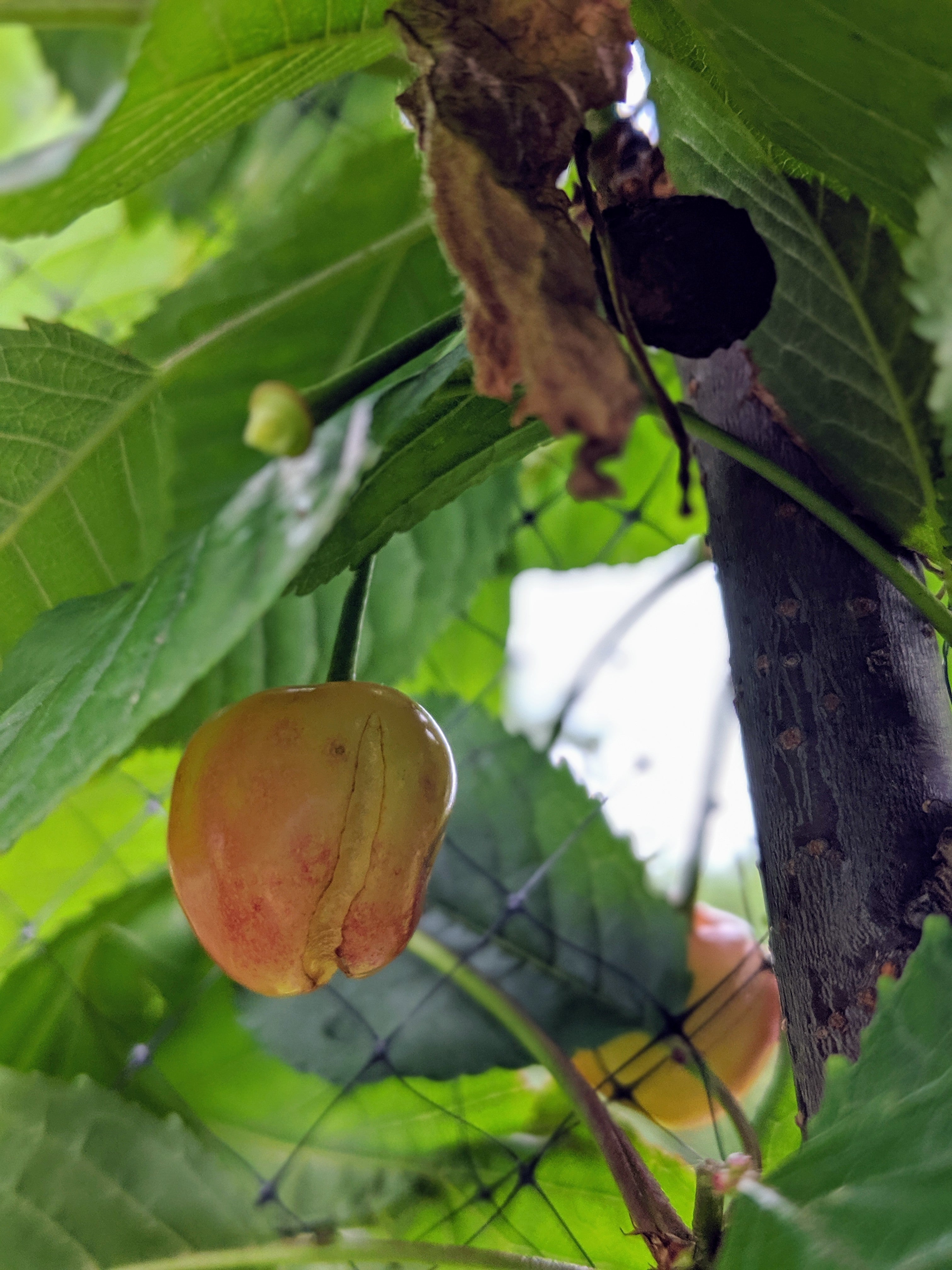
I have a Bing cherry in the front yard and, frankly, it's so old it has a dearth of issues. One of the most annoying aspects of cherry growing is split cherry fruit. What is the reason for cherry fruits that are split open? Is there anything that can prevent fruit split in cherries? This article should help answer these questions.
Help, My Cherries are Splitting!
Many fruit crops have a penchant for splitting under certain conditions. Of course, rain is welcome any time one is growing a crop, but too much of a good thing renders it more of a bane. Such is the case with cracking in cherries. Contrary to what you might surmise, it is not the uptake of water through the root system that causes cracking in cherries. Rather, it is the absorption of the water through the fruit cuticle. This occurs as the cherry nears ripening. At this time there is a greater accumulation of sugars in the fruit and if it is exposed to long periods of rain, dew, or high humidity, the cuticle absorbs the water, resulting in split cherry fruit. Simply put, the cuticle, or outer layer of the fruit, can no longer contain the increasing sugar amount combined with the absorbed water and it just bursts. Usually cherry fruits split open around the stem bowl where water accumulates, but they also split in other areas on the fruit. Some cherry varieties are afflicted by this more commonly than others. My Bing cherry, unfortunately, falls into the category of most afflicted. Oh, and did I mention I live in the Pacific Northwest? We get rain, and lots of it. Vans, Sweetheart, Lapins, Rainier, and Sam have a lesser incidence of fruit split in cherries. No one is exactly sure why, but the prevailing thought is that different cherry varieties have cuticle differences which allow more or less water absorption and the elasticity is varied among varieties as well.
How to Prevent Fruit Split in Cherries
Commercial growers employ helicopter or blowers to remove the water from the fruit surfaces but I am guessing this is a bit over the top for most of us. Chemical barriers and the use of calcium chloride sprays have been tried with varying success in commercial groves. High plastic tunnels have also been used on dwarf cherry trees to protect them from the rain. Additionally, commercial growers have used surfactants, plant hormones, copper, and other chemicals with, again, mixed results and often blemished fruit. If you live in a rain prone region, either accept the cracking or try to create a plastic cover yourself. Ideally, do not plant Bing cherry trees; try one of those less prone to cherry fruits splitting open. As for me, the tree is here and has been for dozens of years. Some years we harvest delicious, juicy cherries and some years only get a handful. Either way, our cherry tree provides us with much needed shade on a southeastern exposure on the week or so that we need it, and it looks glorious in the spring in full bloom from my picture window. It's a keeper.
Sign up for the Gardening Know How newsletter today and receive a free copy of our e-book "How to Grow Delicious Tomatoes".

Amy Grant has been gardening for 30 years and writing for 15. A professional chef and caterer, Amy's area of expertise is culinary gardening.
